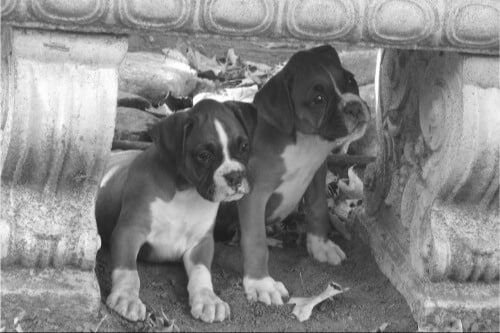
Boxers
Judges must prioritize temperament in Boxers, penalizing shy dogs to maintain breed standard and type in the show ring.
Home » Meet The Breeds » Boxer
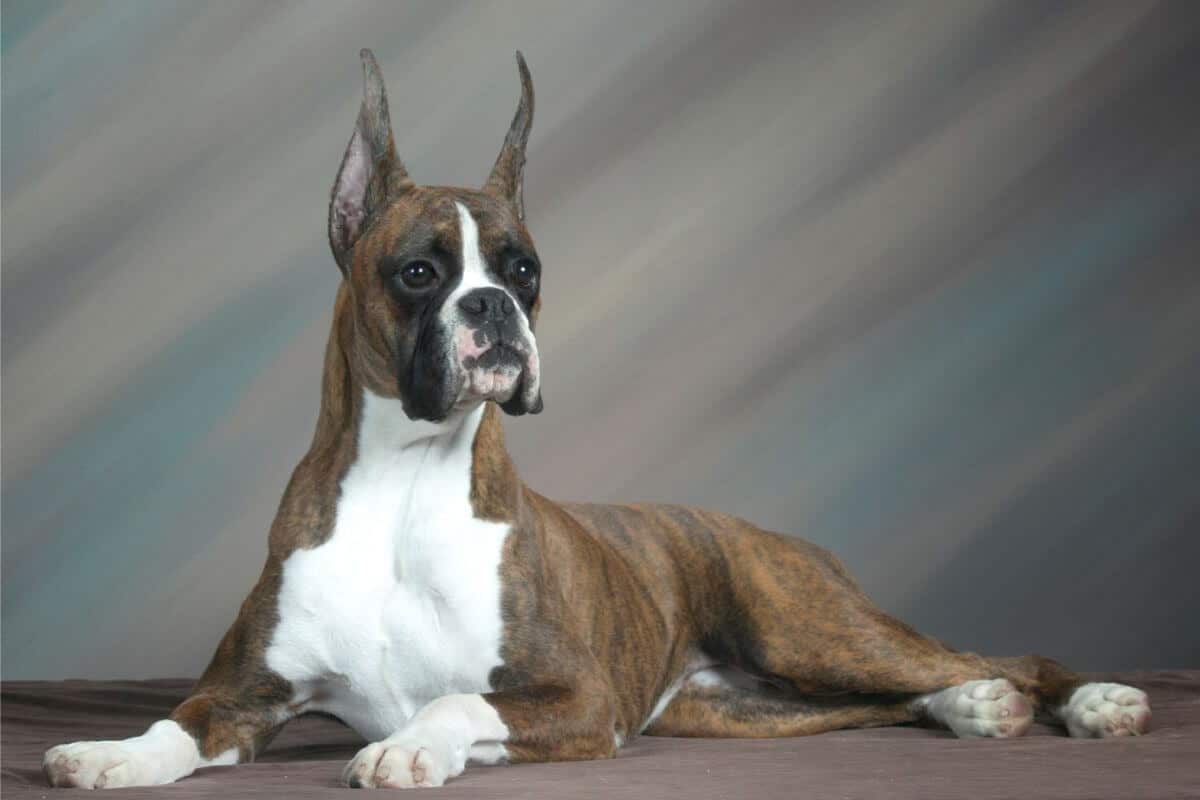
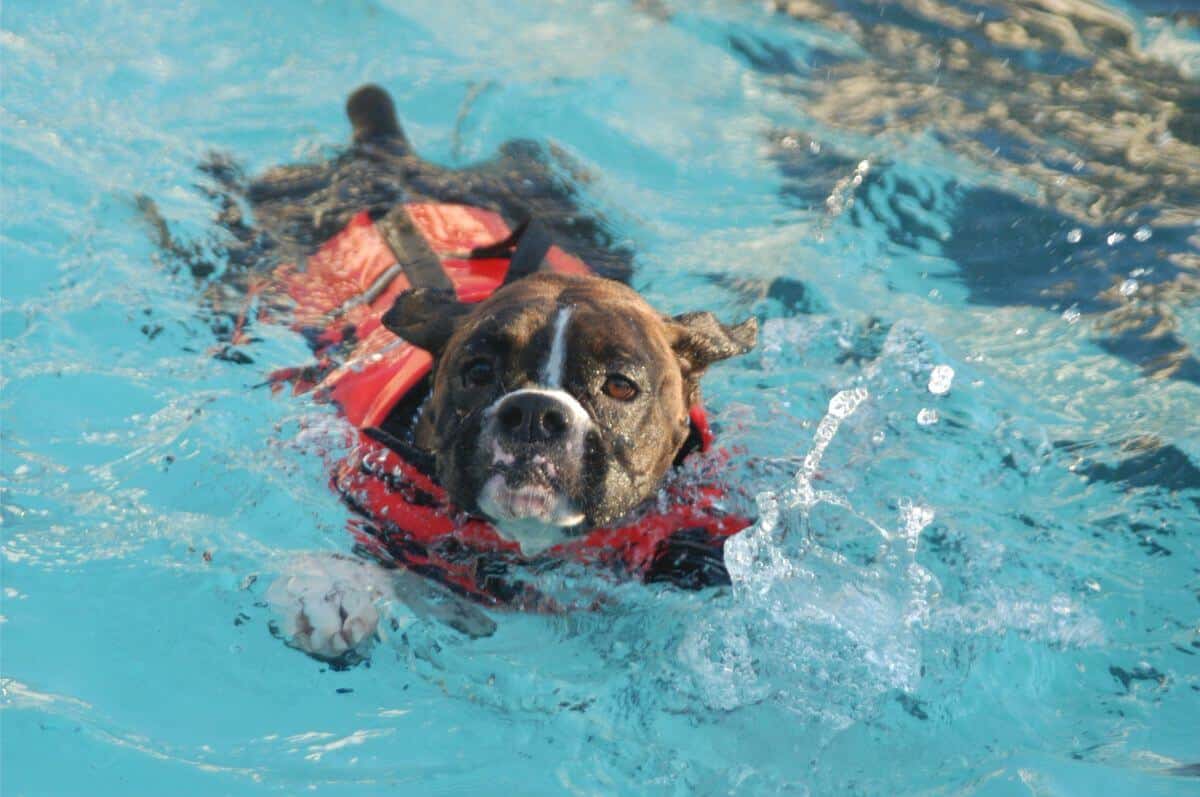
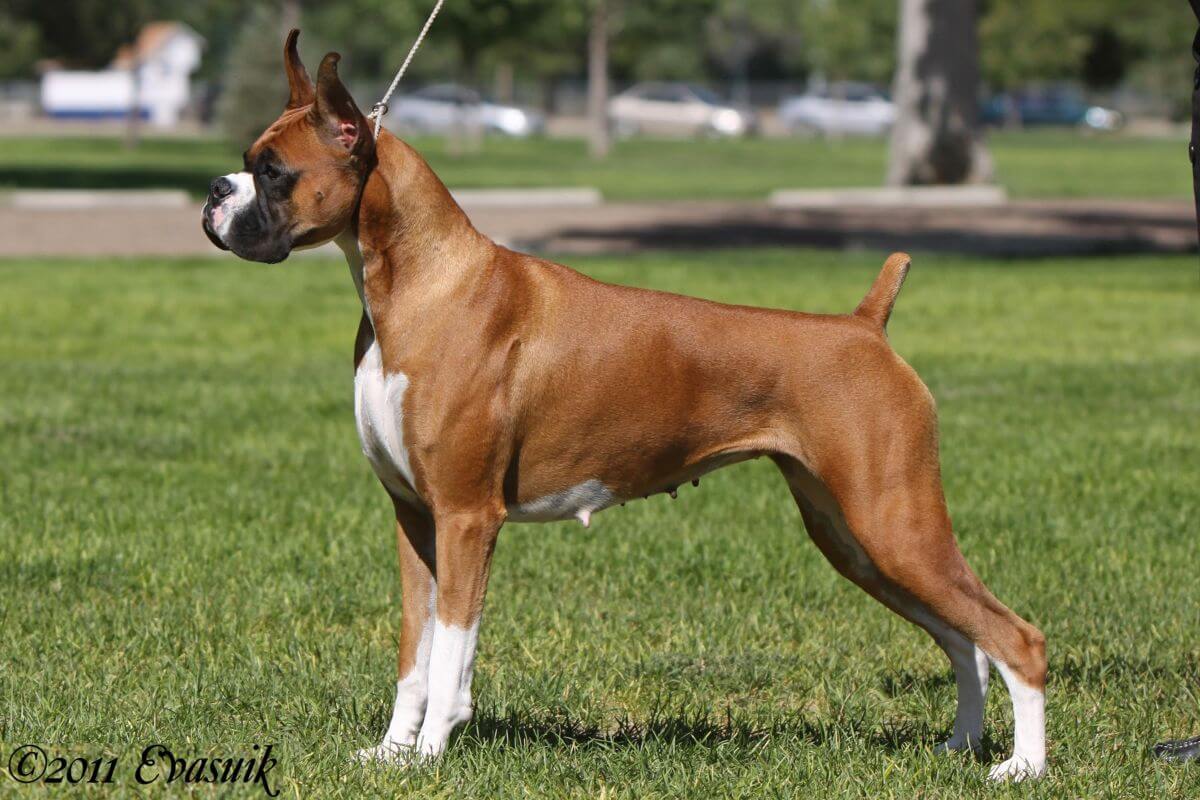
The Boxer is a medium to large-sized working breed known for its strong build, playful personality, and boundless energy. With their expressive faces, muscular physiques, and loyal temperaments, Boxers excel as both family companions and versatile working dogs. Their intelligence and adaptability have earned them a special place in the hearts of dog lovers worldwide.
Working
21.5 – 25 inches
50 – 80 pounds
10 – 12 years
| Country of Origin | Germany |
|---|---|
| Bred For | Companionship, Watchfulness |
| Known For | Animation, Chiseled Head, Muscular Build, Taut Skin |
| Popularity | High |
| Temperament | Active, Affectionate, Fun-Loving, Loyal, Self-Assured |
| Activities | Hiking, Running, Watchdog, Conformation Shows, Dog Sports |
The Boxer’s history traces back to late 19th-century Germany, where the breed was developed by crossing the Bullenbeisser, a now-extinct German hunting mastiff, with Bulldogs and other breeds. The Bullenbeisser, prized for its strength and tenacity, was traditionally used to hunt large game such as boar and bear. Breeders aimed to create a more agile and refined dog while preserving the powerful traits of its ancestors.
By the late 1800s, the Boxer began to take shape as we know it today, with its name believed to derive from the breed’s characteristic “boxing” motion when using its front paws during play or defense. The breed was officially recognized in Germany in 1895, with the establishment of the first Boxer Club, which played a pivotal role in standardizing the breed’s appearance and temperament.
The Boxer’s journey to international recognition began in the early 20th century. The American Kennel Club (AKC) officially recognized the breed in 1904, and the Boxer gained popularity in the United States after World War I, thanks to returning soldiers who brought these dogs home. Their combination of loyalty, intelligence, and athleticism made them excellent service dogs during wartime, often employed as messengers, guard dogs, and even ambulance dogs.
By the mid-20th century, the Boxer had firmly established itself as one of the most popular breeds in the United States, ranking consistently high in AKC registrations. The breed also gained recognition by other major kennel organizations, including the Fédération Cynologique Internationale (FCI) and The Kennel Club (UK).
Male Boxers typically stand between 23 and 25 inches tall at the shoulder, while females measure slightly smaller, ranging from 21.5 to 23.5 inches. In terms of weight, males generally weigh between 65 and 80 pounds, whereas females are lighter, usually falling between 50 and 65 pounds.
The Boxer possesses a square, well-balanced frame, where the length of the body from the point of the shoulder to the rear matches the height at the withers. The breed exhibits a strong, athletic build with substantial bone and well-developed muscles, creating an appearance of power and elegance. Despite the breed’s solid construction, Boxers are never heavy or clumsy, maintaining an agile and lively demeanor reflective of their working heritage.
Texture: The Boxer’s coat is short, smooth, and lies close to the body, offering a glossy appearance that enhances the breed’s athletic build. The texture is firm to the touch, and the coat requires minimal grooming due to its easy-care qualities.
| Standard Color | |
|---|---|
| Brindle | n |
| Fawn | n |
| White | n |
| Standard Marking | |
|---|---|
| Black Mask | y |
| Black Mask, White Markings | y |
| White Markings | y |
| Fawn Markings | n |
| Brindle Markings | n |
A Note About Color: The Boxer is either fawn or brindle in color. Fawn shades vary from light tan to mahogany. The brindle ranges from sparse but cleanly defined black stripes on a fawn background to such a heavy concentration of black striping that the essential fan background color barely, although clearly, shows through. White markings may appear and be distributed so as to enhance the dog’s appearance, but may not exceed one-third of the entire coat. On the face, white may replace part of the otherwise black mask, and may extend between the eyes but not excessively as to detract from the expression. White should not appear on the flanks or on the back of the torso. Boxers without white markings are acceptable, but excessive white markings, and any color other than fawn or brindle, are not.
The Boxer’s tail is set high and traditionally docked to a short length, continuing the clean, streamlined appearance of the breed. However, natural tails are not uncommon today and are typically carried upward. The natural tail is medium in length and tapers to a slight point.
The Boxer is an athletic and intelligent breed that requires regular exercise, consistent training, and mental stimulation. Known for its strong bond with its family, the breed thrives on companionship and does not do well when left alone for long periods. Boxers are energetic and need experienced handlers to manage their strength and high activity levels. Potential owners should be prepared to provide a structured and active lifestyle to meet the breed’s physical and mental needs.
The Boxer is a typically healthy breed with a lifespan of 10 to 12 years. However, like all dogs, individual’s may be prone to certain health conditions that prospective caretakers should be aware of. Regular veterinary care, a balanced diet, and appropriate exercise are essential.
Boxers can be predisposed to several health issues, including:
The Boxer is a friendly and playful breed that thrives on human interaction and companionship. Their energetic and outgoing nature makes them excellent family dogs, especially for active households.
While Boxers are generally good with children, their high energy and enthusiasm may require supervision around very young kids. They are typically good with other dogs when properly socialized but may be wary of strangers, often showing a natural protective instinct towards their family.
Boxers are highly sensitive dogs and do not respond well to harsh training methods, preferring positive reinforcement and a calm, consistent approach. Their strong desire for attention and connection with their human companions means they are not well-suited for extended periods of solitude.
A balanced diet is essential for maintaining the Boxer’s active lifestyle and overall health. Boxer puppies require high-quality puppy food designed to support their growth and development, typically divided into three to four meals per day.
Adult Boxers benefit from a high-protein diet to maintain their muscular build and energy levels, usually fed in two meals per day. The amount of food required depends on the dog’s size, age, activity level, and metabolism, but most adult Boxers consume about two to three cups of kibble daily.
It’s important to monitor their weight and adjust portions accordingly, as Boxers can be prone to obesity. Fresh water should always be available, and treats should be given in moderation to prevent overfeeding. Consulting a dog’s breeder and veterinarian can help to develop a feeding plan that suits an individual dog’s specific needs.
Boxers are intelligent and eager to please, making them generally responsive to training, especially when positive reinforcement methods are used. However, their high energy levels and playful nature can sometimes lead to distraction, so patience and consistency are crucial.
Early socialization is essential to make sure that Boxers are comfortable with new people, pets, and environments, helping to prevent unwanted assertiveness or shyness. While they are quick learners, Boxers can exhibit a stubborn streak, requiring firm but gentle guidance.
They can excel at Obedience Trials and often enjoy canine sports like Agility and Rally, which engage both their mind and body. Boxers are vocal dogs with a tendency to bark, particularly when excited or alerting to potential threats, so training to manage this behavior can be beneficial.
Boxers should always be exercised in secure areas or on a leash.
Boxers are high-energy dogs that require daily exercise to maintain their physical and mental health. They thrive on activities such as long walks, runs, or active play sessions that allow them to burn off their energy.
| Energy Level | Moderate to High |
|---|---|
| Exercise Requirements | 2 Hours/Day (Minimum), Daily Walks, Vigorous Running, Regular Exercise, Playing with Another Dog, Mental Stimulation |
Without sufficient exercise, Boxers may develop destructive behaviors or restlessness due to boredom. They enjoy mentally stimulating activities like puzzle toys or learning new commands that engage their sharp minds.
Boxers are naturally playful and can excel in sports such as Agility or Flyball, where they can combine their athleticism with their love of interaction. A securely fenced yard is needed for off-leash play, but Boxers should always be supervised during outdoor activities to prevent them from running off or chasing smaller animals.
Boxers have a short, smooth coat that requires minimal grooming to stay in good condition. Weekly brushing with a soft-bristle brush or grooming mitt helps to remove loose hair and keeps the coat shiny.
| Coat Type | Short, Shiny, Smooth, Tight-Fitting |
|---|---|
| Grooming Requirements | Weekly Brushing, Occasional Bathing, Routine Ear Cleaning, Periodic Nail Trimming, Regular Tooth Brushing |
These dogs are average shedders, though their grooming needs increase slightly during seasonal shedding periods. Regular ear cleaning, nail trimming, and dental care are essential for maintaining overall health and hygiene.
Boxers are naturally clean dogs with little odor, so baths are only needed occasionally or when they become dirty. Their short coat makes grooming relatively easy, but their skin can be sensitive, so mild, dog-safe products are recommended.
Boxers are adaptable dogs but are best suited to homes with active families or individuals who can meet their exercise and companionship needs. They can live in apartments if given sufficient exercise, but access to a yard is ideal.
Due to their short coat, Boxers are sensitive to extreme temperatures. They may struggle in cold weather without protection, such as a dog coat, and are prone to overheating in hot weather. Exercise should always be moderated in high temperatures.
Boxers form strong bonds with their families and thrive in environments where they can be included in daily activities. Since they can develop separation anxiety or destructive behaviors if isolated, they are not well-suited to being left alone for extended periods of time.
Boxer puppies are playful, curious, and energetic, requiring guidance and structure to grow into well-mannered adults. Early socialization and training are essential to help them channel their enthusiasm and develop confidence.
Their high energy levels and eagerness to interact make them enjoyable (but sometimes challenging) to raise. A structured environment with plenty of physical and mental stimulation is key to ensuring they thrive.
Caring for a Boxer puppy involves providing proper nutrition, exercise, and socialization. Each puppy should be fed a high-quality diet tailored to its growth, divided into three to four meals per day, with fresh water available at all times.
Age-appropriate exercise, such as short walks, gentle play, and supervised exploration, prevents strain on developing joints. Socialization is crucial, exposing the puppy to various environments, people, and animals to foster a well-rounded temperament.
Positive reinforcement training helps to establish good behavior and strengthens the bond between puppy and caretaker. Routine veterinary care, including vaccinations, deworming, and regular check-ups, ensures a healthy start in life. A loving, safe, and structured environment is essential for any puppy’s development.
The Boxer is recognized by the world’s leading registries and kennel organizations, which categorize the breed into a specific Group based on its unique characteristics. This breed is recognized worldwide under the following Group designations:
| Organization | Group Designation |
|---|---|
| AKC (American Kennel Club) | Working |
| UKC (United Kennel Club) | Guardian |
| CKC (Canadian Kennel Club) | Working |
| ANKC (Australian National Kennel Council) | Utility |
| RKC (The Royal Kennel Club) | Working |
| FCI (Fédération Cynologique Internationale) | Group 2: Pinscher and Schnauzer Type – Molossoid Breeds – Swiss Mountain and Cattle-Dogs; Section 2.1 – Molossoid Breeds, Mastiff Type |
The ideal Boxer is described by a Breed Standard that is approved by each of the world’s leading registries and kennel organizations. The Breed Standards for this breed may be found in the following links:
| Organization | Breed Standard |
|---|---|
| American Kennel Club | AKC Boxer Breed Standard |
| United Kennel Club | UKC Boxer Breed Standard |
| Canadian Kennel Club | CKC Boxer Breed Standard |
| Australian National Kennel Council | ANKC Boxer Breed Standard |
| The Royal Kennel Club | RKC Boxer Breed Standard |
| Fédération Cynologique Internationale | FCI Boxer Breed Standard |
For individuals seeking to adopt a Boxer, local animal shelters and broader rescue organizations may also have a dog available. These organizations should also be able to offer support and resources to help with the adoption process.
Boxers typically have a lifespan of 10 to 12 years. Their longevity depends on factors like genetics, health, and the quality of care they receive, including regular vet visits and proper nutrition.
Boxers are not inherently aggressive but are naturally protective of their families. Early socialization and training will help them remain well-behaved and approachable.
The breed’s name likely comes from the tendency to play by “boxing” with the front paws. This unique behavior is a hallmark of the breed’s playful and energetic nature.
Boxers are intelligent and quick to learn, especially with positive reinforcement. However, their independent streak may require consistent and patient training efforts.
Male Boxers typically grow to 23 to 25 inches tall at the shoulder. Females are slightly smaller, standing 21.5 to 23.5 inches tall.
Boxers have short coats that shed moderately but are easy to maintain. Weekly brushing helps to manage shedding and keeps the coat healthy and shiny.
Boxers were originally bred in Germany for hunting large game like deer and wild boar. They were later used as working dogs in roles such as guarding, police work, and service assistance.
Adult male Boxers usually weigh 65 to 80 pounds, while females typically weigh 50 to 65 pounds. Their muscular build and weight should align with their height and frame.
Boxers are excellent family dogs, known for their loyalty, affection, and playful nature. They are particularly well-suited to active families that can provide regular exercise and interaction.
Boxers can swim, but they are not natural swimmers due to their deep chests and short muzzles. Supervision is always recommended when they are in or near water.
The Boxer originated in Germany during the late 19th century. The breed was developed by crossing the now-extinct Bullenbeisser with Bulldogs.
Boxers are athletic dogs capable of reaching speeds of up to 30 miles per hour. Their muscular build and high energy levels contribute to their impressive agility and speed.
Boxers typically reach their full height by about 18 months of age. However, they may continue to gain muscle mass and fill out until they are around two years old.

Judges must prioritize temperament in Boxers, penalizing shy dogs to maintain breed standard and type in the show ring.
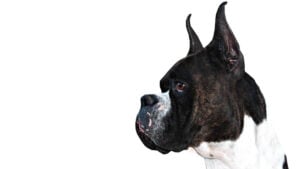
Explore the challenges and potential of achieving a universal type for Boxers, fostering global breed harmony and health.
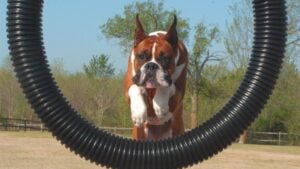
A detailed look at the Boxer’s personality, strengths, health, and role as a loving, loyal family companion.

Explore the evolution of the ideal Boxer head, from the Munich silhouette to today’s standards of proportion, balance, and expression.
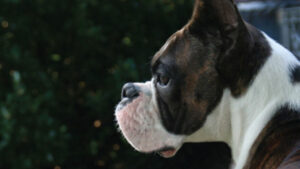
Discover the intricacies of the Boxer’s head in this detailed article about one of the most distinctive “head breeds” in the canine world.
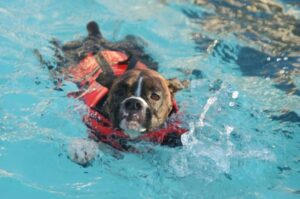
Find out where to look for essential information about the Boxer dog breed. The American Boxer Club’s website, Youtube channel, and more!

Bonnie Wagaman is the breeder behind CinniBon Boxers. Read about the kennel’s beginnings, champions dogs, Boxer puppies, photos & more!
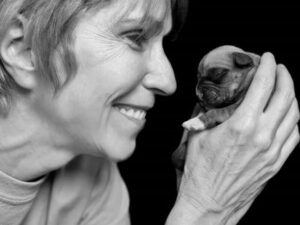
Learn about Paula Vandervoorts journey, and the mission of the natural rearing breeder connection in this insightful interview.

Stephanie Davidson is the breeder behind South Willow Boxers. Read about the kennel’s beginnings, the sires, the dams, and much more!
The best way to ensure a long and happy relationship with a purebred dog is to purchase one from a responsible breeder. Not sure where to begin?
Contact the National Parent Club’s Breeder Referral Program, which is listed on the AKC Breeder Referral Contacts page.
